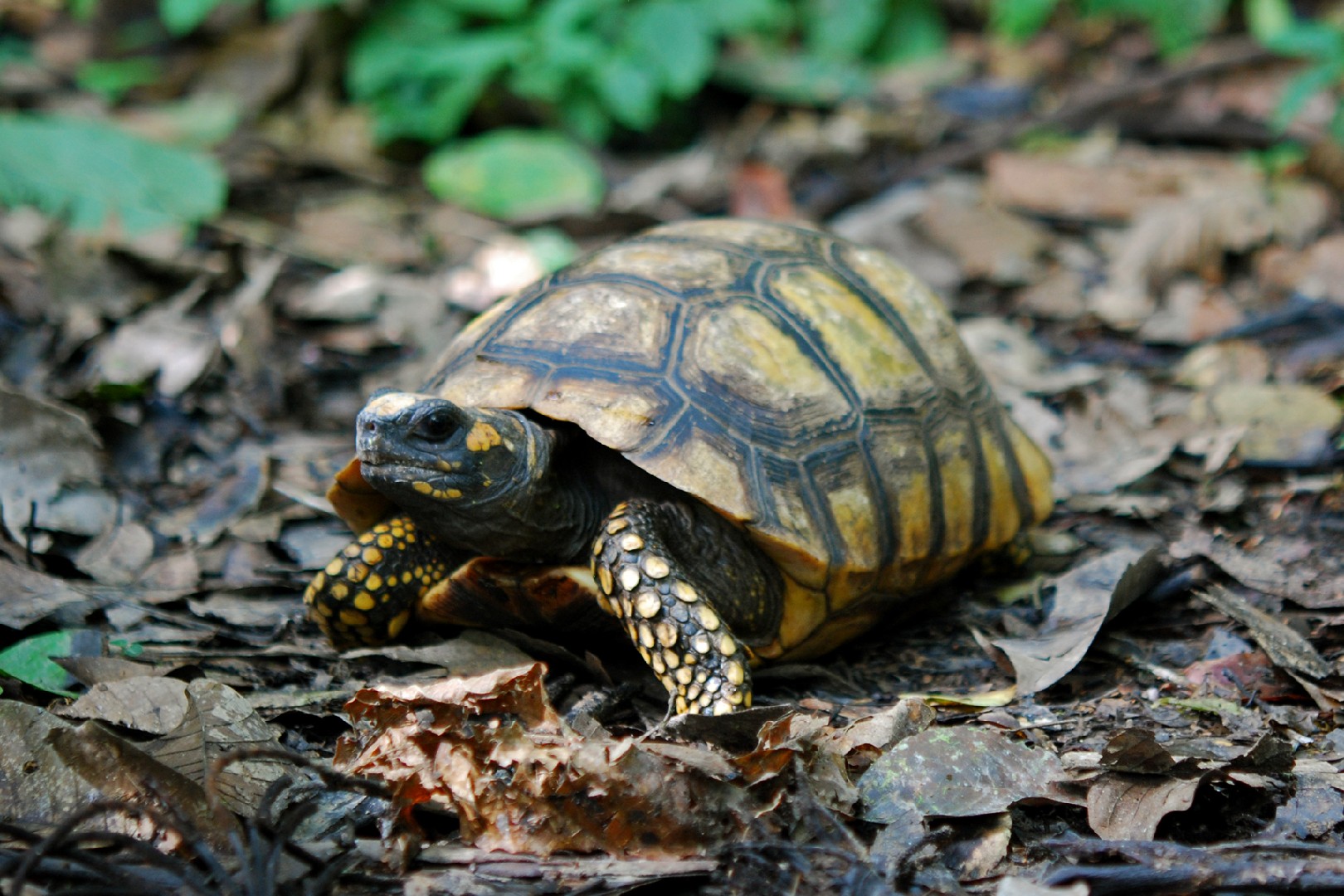Yellow-footed tortoise
A species of Galápagos giant tortoises and allies, Also known as Yellow-legged tortoise, South american tortoise, South american yellow-footed tortoise Scientific name : Chelonoidis denticulatus Genus : Galápagos giant tortoises and allies
Yellow-footed tortoise, A species of Galápagos giant tortoises and allies
Also known as:
Yellow-legged tortoise, South american tortoise, South american yellow-footed tortoise
Scientific name: Chelonoidis denticulatus
Genus: Galápagos giant tortoises and allies
Content
Description General Info
 Photo By Geoff Gallice , used under CC-BY-2.0 /Cropped and compressed from original
Photo By Geoff Gallice , used under CC-BY-2.0 /Cropped and compressed from original Description
The yellow-footed tortoise (Chelonoidis denticulatus), also known as the Brazilian giant tortoise, is a species of tortoise in the family Testudinidae and is closely related to the red-footed tortoise (C. carbonaria). It is found in the Amazon Basin of South America.
General Info
Lifespan
80-100 years
Diet
Yellow-footed tortoise exhibits herbivorous tendencies, primarily consuming a diet of various plant materials. This species favors grasses, but also eats fibrous leaves, twigs, and fruits, specifically fallen ones. Their diverse plant intake ensures nutritional balance.
Appearance
Yellow-footed tortoise is a large tortoise with a carapace length of over one meter. Its shell is domed and brown to dark yellow with a high front opening. Females have a smaller and shorter tail compared to the long, thick tail in males. The tortoise also possesses robust, elephantine legs and it lacks any distinct markings or patterns on its skin. With age, the carapace of this tortoise develops numerous denticulations or 'teeth' around the edges.
Behavior
Yellow-footed tortoise is primarily solitary, spending most of its day foraging for vegetation. This species uniquely possesses a well-developed sense of smell, vital in locating food and water sources and detecting predators. Also remarkable, is its ability to go without water for extended periods, a vital survival adaptation for its dry habitat.